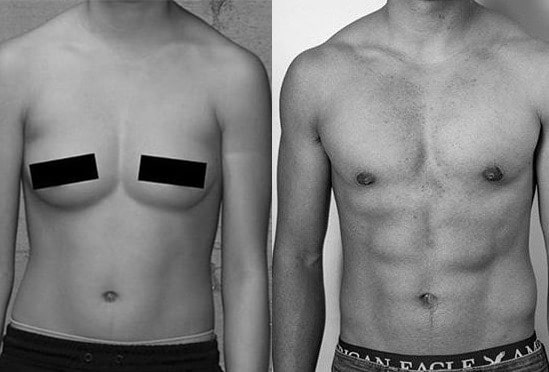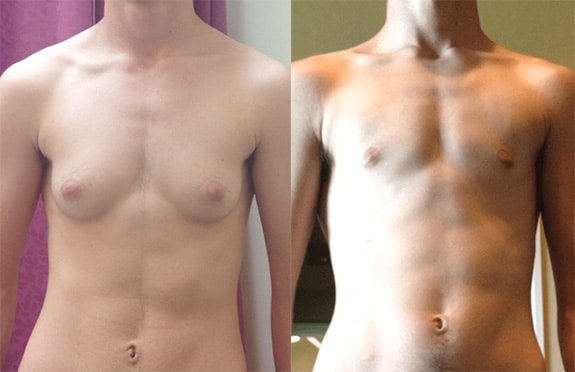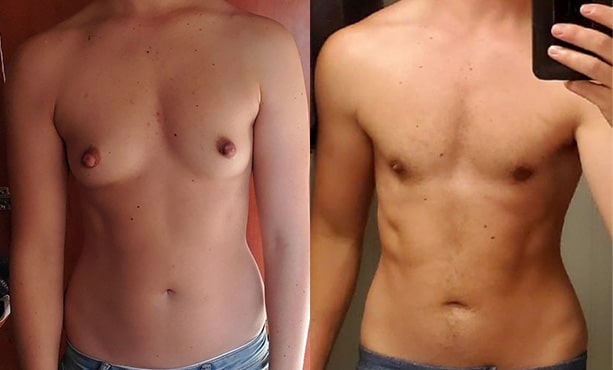Dr. Daniel A. Medalie in Cleveland, Ohio is an internationally recognized expert in the field of Female to Male gender affirmation chest or "top" surgery. He has been practicing since 1999 and has performed well over 3000 gender affirmation chest procedures. He has also published multiple articles and lectured extensively in the field of chest masculinization. He has been featured in several documentaries about transgender surgery including ones on MTV and LOGO tv. He also focuses on top surgery revisions and is happy to provide free virtual consultations for patients desiring another opinion or revisions of their previous top surgery.
IMPORTANT TOP SURGERY FAQs AND POST-OP INSTRUCTIONS ARE AT THE BOTTOM OF THIS PAGE-PLEASE SCROLL DOWN
*Plastic surgery results can vary.
What people are saying about Dr. Medalie on Google:
I'm a physician that specializes in the care of transgender people. I have seen hundreds of top surgery results over the years. Maybe even 1,000.
Dr. Medalie routinely produces the best results I see on any of my patients that get top surgery done. The worst outcome top surgery I have ever seen done by him was a 9/10. The best I've seen done locally in michigan I'd call an 8/10. Literally, the worst results I've seen on anyone done by this guy are better than the best results done by everyone else. Some of these patients come back and you can't even tell that they ever had top surgery done. I don't even know how he does the micro suturing or whatever it is that he does to not leave the telltale 1/2cm thick double incision scar lines but the results are amazing.
I have never talked to Dr. Medalie personally. I don't know him personally in any capacity or have any vested interest in his clinic or his success. This is my real honest opinion after eight years of treating transgender patients and seeing the results of the work of many surgeons.
Unequivocally he is my top recommendation for top surgery. It's not even close.
Dr. Medalie Performs FtM Peri-Areolar Mastectomy with circum-areolar mastopexy
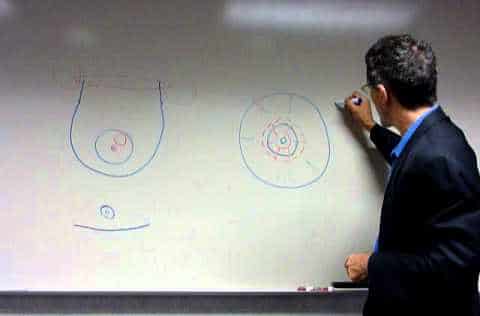
Dr. Medalie explains the various options for FtM Gender Affirmation Top Surgery

Dr. Medalie reviews his FtM top surgery results comparing the Peri to DI technique
FTM Top Surgery Peri-Areolar Technique vs. Double Incision with Nipple Grafts
| Aspect | FTM Top Surgery – Double Incision | FTM Top Surgery – Peri-Areolar |
|---|---|---|
| Definition | Chest masculinization procedure that removes breast tissue and excess skin through two horizontal incisions across the chest, with nipple-areola grafting or resizing. | Chest masculinization procedure performed through circular incisions around the areola, removing breast tissue with minimal skin excision. Can be partial (7-11 o'clock) or circumferential around the areola |
| Ideal Candidates | Trans men or non-binary individuals with medium-to-large chest size, excess skin, or reduced skin elasticity. | Best for small chest sizes (A–small B cup), minimal excess skin, and good skin elasticity. |
| Surgical Technique | Two incisions along the lower chest; breast tissue and skin removed; nipples resized and grafted in masculine position. Liposuction of central and lateral chest and pre-axilla. | Partial or concentric incisions around the areola; breast tissue removed; areola may be reduced; skin tightens naturally over time. Liposuction of pre-axilla |
| Scarring | Moderate to significant scars across the chest wall (fade over time but permanent). I try and place them in the shadow of the pectoralis muscle | Minimal scarring limited to the edge of the areola, often less visible. Can widen over time if circum-areolar |
| Nipple Sensation | Higher risk of loss of sensation due to free nipple grafting. | Greater chance of preserved nipple sensation since nipple is usually left attached. |
| Anesthesia & Surgery Time | General anesthesia; approx. 1.5-2 hours. | General anesthesia; approx. 2–2.5 hours. |
| Recovery Time | 4–6 weeks for most physical activity; no heavy lifting for 8 weeks, compression garments required for 2 weeks. | 4-6 weeks for most physical activity; no heavy lifting for 8 weeks, compression garments required for 2 weeks. |
| Risks & Complications | Bleeding, infection, nipple graft failure, contour irregularities, hypertrophic scarring. | Risk of skin wrinkling, nipple stretching, under-correction, or need for revision if excess skin remains. |
| Longevity of Results | Permanent, with possible revisions for scars or contour refinements. | Long-lasting, but higher chance of revision surgery if chest skin does not retract as expected. |
| Cosmetic Outcome | Creates a flat, masculine chest even with larger breast size, but with visible scars. | More natural-looking chest with minimal scarring; best cosmetic results only in small-chested patients. |
 Summary:
Summary:
When considering FTM top surgery, the choice between the double incision technique and the peri-areolar technique depends on chest size, skin elasticity, and desired outcomes. The double incision method is most effective for medium to large chests, providing a flat, masculine contour with permanent results, though it leaves visible chest scars and will almost certainly reduce nipple sensation. The peri-areolar approach, on the other hand, is best suited for individuals with smaller chests and good skin elasticity, offering subtle results with minimal scarring and a greater chance of preserved nipple sensation (but still variable). Both procedures significantly reduce gender dysphoria, improve self-confidence, and help trans men and non-binary individuals feel more comfortable in their bodies. Dr. Medalie is a world expert in gender affirmation top surgery and has been performing the procedure for over 25 years. He provides free virtual consults to prospective patients both for primary top surgery and revisionary top surgery.
Gender Affirmation Top Surgery- The Peri-Areolar Technique
In general, patients who have smaller breasts can have the entire surgery performed by having a small incision at the outer edge of the areola from 12:00 to 6:00 o’clock. A lighted retractor and surgical scissors are used to perform a complete sub-cutaneous mastectomy. Liposuction of the chest is also performed as needed (typically in the pre-axillary fat pad and sometimes lateral to the breast tissue ).This provides the most optimal results and can be almost invisible after it heals. If the skin appears a little looser at the start of the case then a complete circumferential-areolar incision is made. A 25 mm cookie cutter is used to mark out the nipple and a small amount of areola. Then a larger cookie cutter (45mm) is used to mark outside the outer edge of the areola. The intervening skin is then removed (in a doughnut pattern, also known as-“peri-areolar or “purse-string” mastopexy”). An incision is made through the exposed dermis and a subcutaneous mastectomy is performed taking care to preserve enough tissue under the nipple/areolar complex to maintain blood supply after wound closure. Then the outer edge of the skin is closed with a purse-string to the newly down-sized areola. By necessity, the edges of the incision around the nipple will be “scalloped” or bunched up initially. This settles down to a great degree over time. If the patient understands that scar revision may be necessary, this is a very reasonable approach. It is more complicated however and takes longer in the OR. The nipple may also experience compromise of its blood supply and also have sensation or erectile capacity changes. Excellent peri results can be seen in multiple patient photos in my Top Surgery Gallery
PERI-AREOLAR SURGERY STEPS:
- Marks drawn on chest in OR holding area, IV placed, and patient taken back to OR and put to sleep under light general anesthesia.
- Tumescent solution (saline, local anesthesia and epinephrine to constrict blood vessels) infiltrated into the chest and breast.
- For simple peri the incision is marked on the outer edge of the areola from 6:00 to 12:00 o'clock.
- For a full circum-areolar peri. A cookie cutter marks around the nipple and then a larger circle outside of the areola is marked. The intervening skin is removed (de-epithelialized) and then an incision is made through the dermis to access the gland.
- Power assisted liposuction (PAL) is performed in the pre-axillary region (in front of armpits) and lateral to breast tissue.
- Flaps of chest skin and fat are elevated off the underlying gland using a lighted retractor and curved sharp scissors (care is taken to preserve enough tissue under the nipple).
- The gland is removed from the pectoralis major and chest wall with electrocautery (controls bleeding) and delivered out of the wound.
- Drains are placed in the wound, and long lasting local anesthetic infiltrated into pectoral nerves.
- The incisions are closed for a simple peri with a triple layer of absorbable sutures.
- For a full peri, a purse-string permanent suture is used to close the outer diameter circle down to the smaller nipple/areolar complex. Two more layers of suture are applied.
- Occlusive dressings, foam and a compression vest are applied.
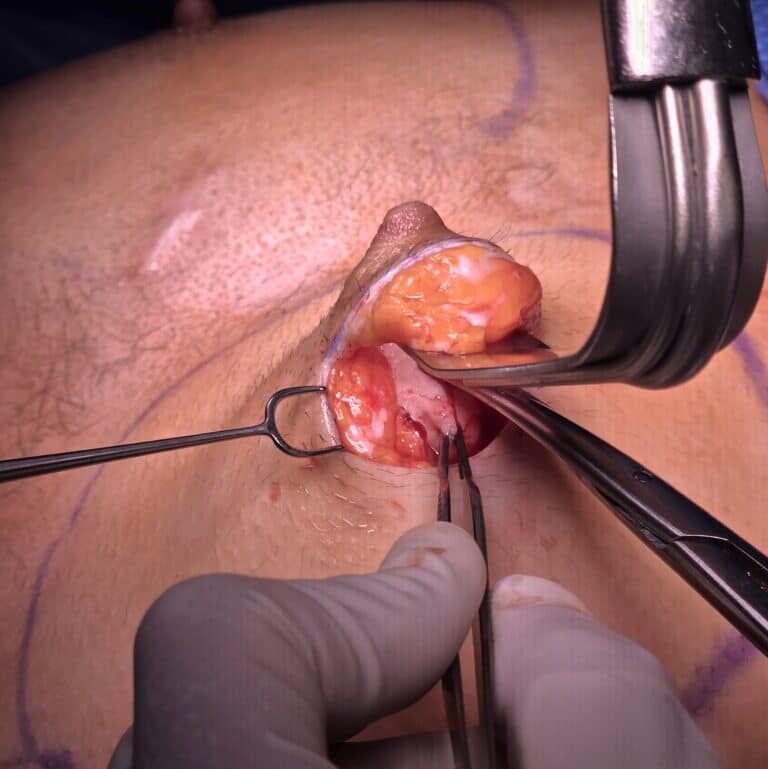
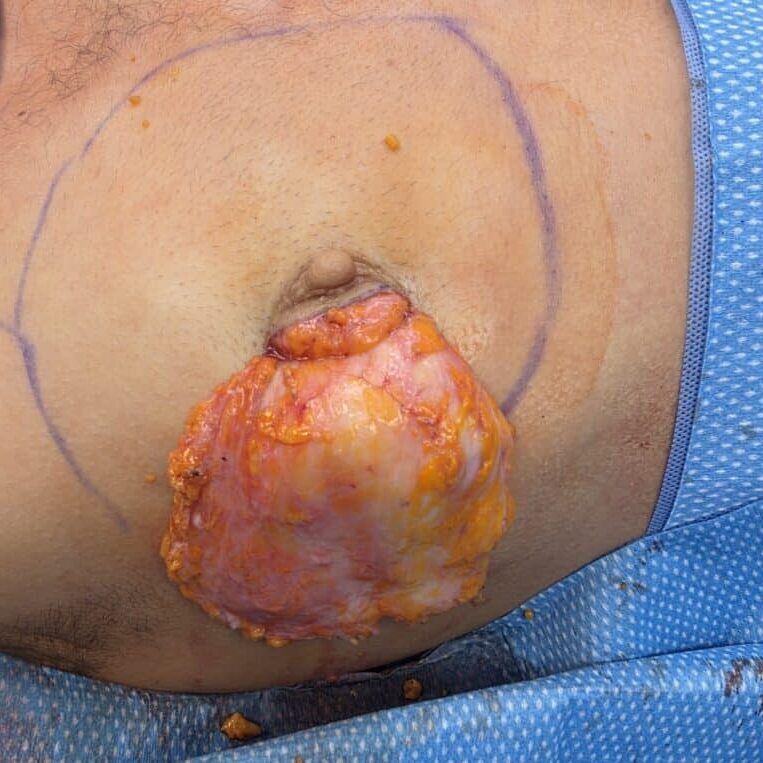
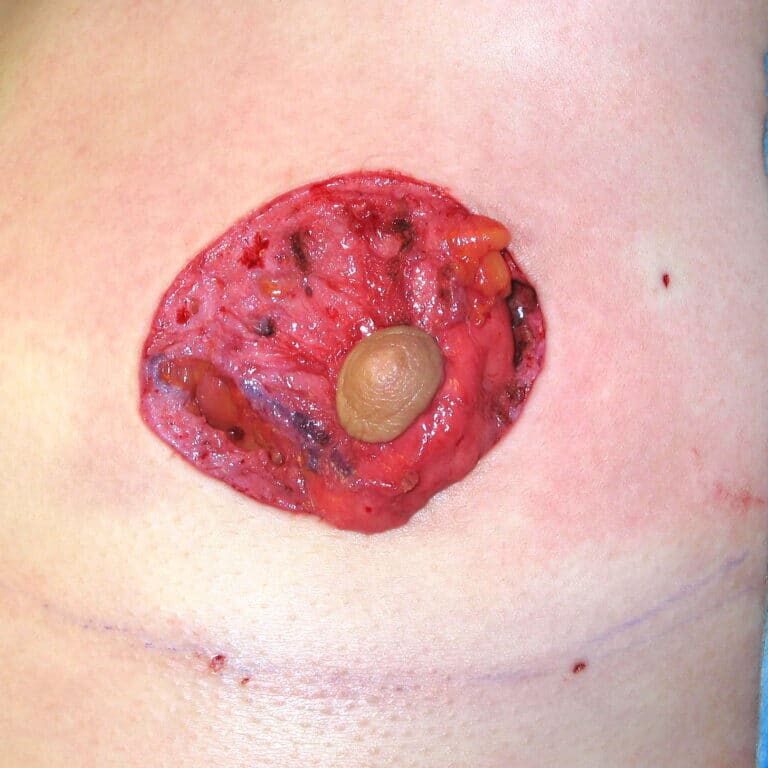
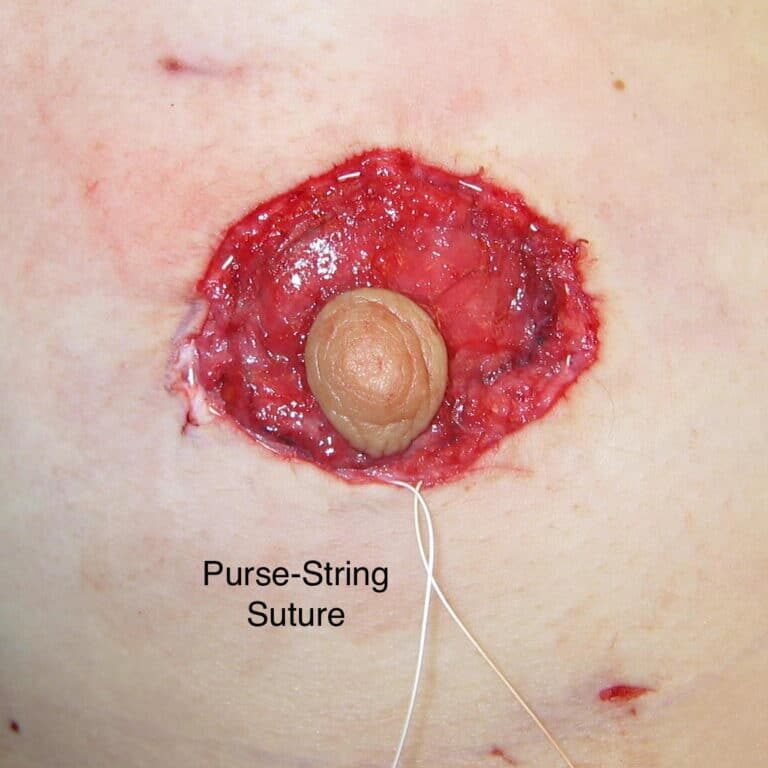
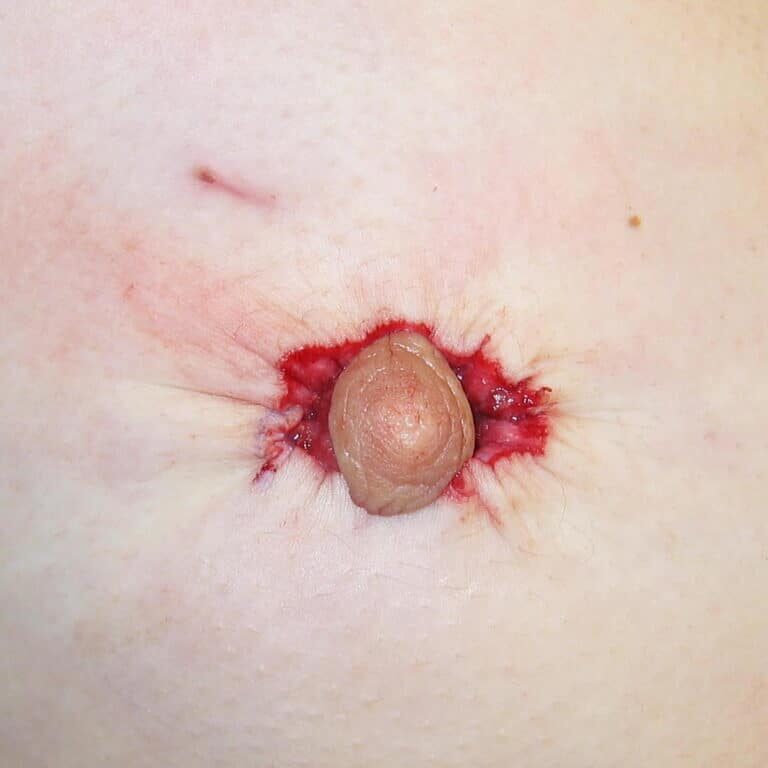
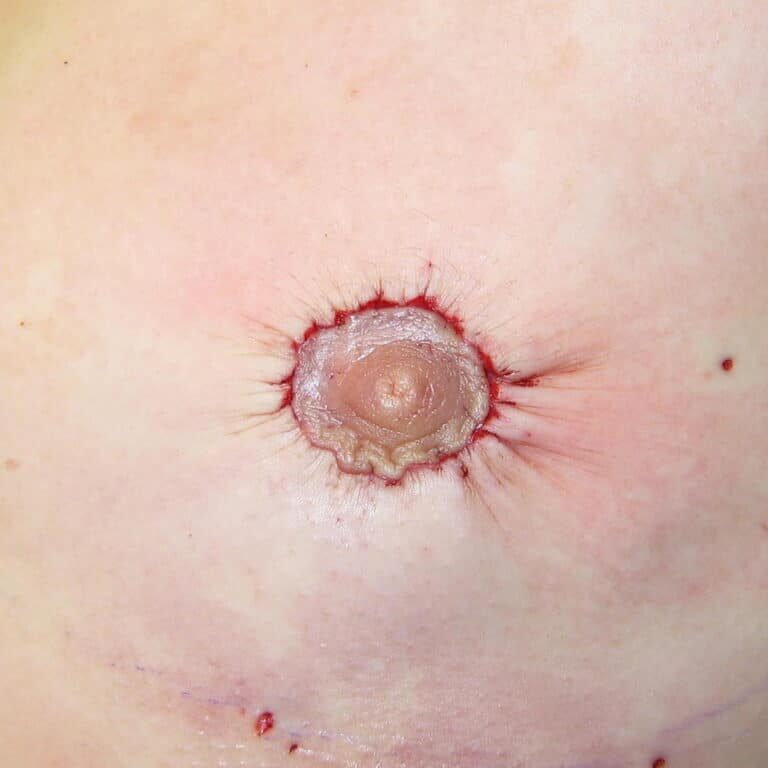
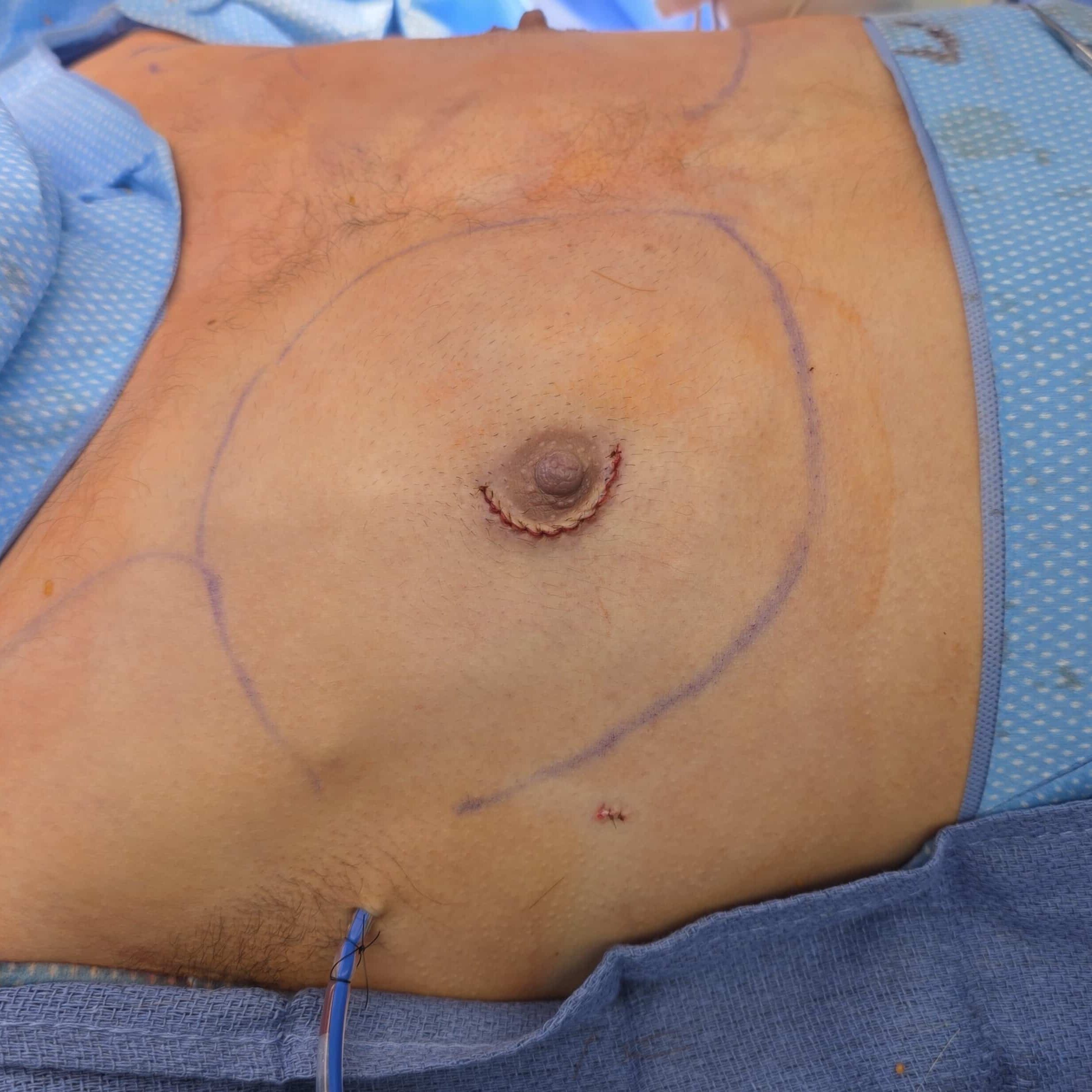
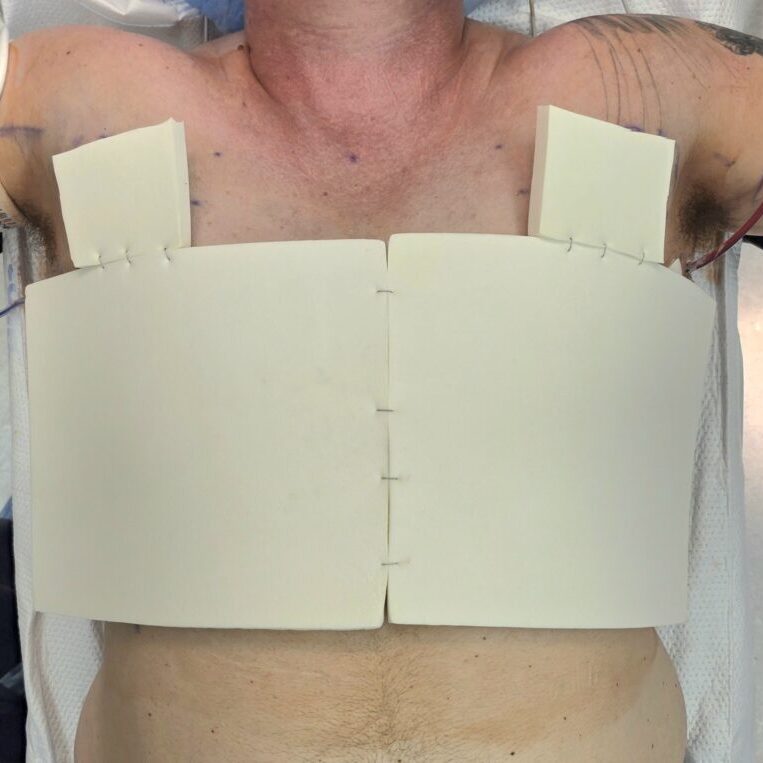
FtM Peri-Areolar Top Surgery FAQ
Yes-Both the peri and Di procedures needs to be performed with the patient asleep.
A typical Peri last around 2-2.5 hours
I typically give my patients antibiotics on the day of surgery. Post operative infections are rare and are typically related to the dissolving sutures which can sometimes irritate the skin. Please be aware that smoking is the number one reason for post-operative infections and healing problems. I thus require my patients to STOP SMOKING at least 3 months prior to top surgery procedures.
During the surgery, local anesthetic is injected into the tissue using a tumescent technique-this blocks the sensation and also constricts blood vessels. As a result, there is very little bleeding during the surgery. I have NEVER had a patient have a severe bleeding complication post-op, but it is not impossible and a return trip to the OR may be necessary. No one has ever needed a blood transfusion for this procedure. Sometimes a patient will get a little bit of bleeding in the chest and not know it because of all of the dressings. This is called a hematoma and can be addressed under local in my clinic without a return to the OR.
The length of the scars and whether they go partway or all the way around your areola is dependent on your pre-existing anatomy. If the skin is a little less elastic or there is a defined infra-mammary crease or an enlarged areola, then the circumferential peri areolar procedure may be used. If the skin is tight and the glandular volume not very pronounced, then a simple peri will suffice.
Sometimes when all the glandular tissue is removed underneath the nipple, the blood supply to the nipple can be compromised. This is more common in a complete circum-areolar peri than a partial incision. There may be some breakdown of the wound but usually this is self-limiting and heals on its own with only the application of antibiotic ointment.It is extremely rare to completely lose a nipple. Because the breast tissue is removed from the chest wall, by necessity nerves are cut and nipple sensation is affected. Some patients regain full sensation after a peri, but this is by no means guaranteed. It is more likely than with a DI and nipple grafts.
These are fairly well tolerated operations. Pain that may require narcotic pain medicine typically lasts 3-4 days. After that, ibuprofen (Motrin and Advil) is sufficient. I recommend that patients take at least 1 week off from work or school and driving. The post-op care involves a compression vest for 2 weeks and scar massage after that. No heavy lifting is allowed for 8 weeks Most of the swelling and all of the buried stitches have disappeared by 3-4 months.
I recommend that patients refrain from exercise for at least 3 weeks after surgery. Even after 3 weeks, the incisions may be sensitive and patients need to use caution. Full activity including heavy lifting can not resume until the patient is 2 months out from surgery. The goal is to to not stretch the scars around the areola.
Some of the deep sutures under the skin can take up to three months to completely dissolve. For this reason, some patients may report sensitivity issues such as itching for up to three months post-op. Nipple and chest sensation may always be a little numb. Typically my patients have resumed full activity by 2-3 months. The final result including fading of the top surgery scars can take up to 1 year.
Yes – I frequently perform multiple procedures on top surgery patients. Liposuction and tummy tucks are the most common simultaneous surgeries.
The cost of top surgery varies based on:
- Surgical technique required (partial peri vs. full peri)
- Duration of the procedure
When you consult with Dr. Medalie he will explain your options and e-mail you a comprehensive price quote the same day that includes the top surgery, the anesthesia and the facility costs. A typical cost for peri is between $8500-9500. This includes all materials, anesthesia and facility fees and all post-op care.
